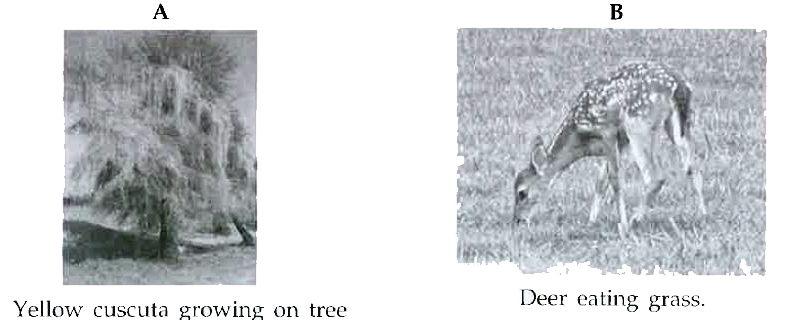Study the characteristic features given below
(a) Lack a well-defined nucleus and cellular organolles.
(b) Mode of nutrition of organisms can be autotrophic or heterotrophic,
(c ) Organisms are prokaryotic, some of them have nitrogen fixing abilities
(d) Includes bacteria, blue-green algae and mycoplasma etc.
Give characteristics identified with which kingdom from those given.
Monera
Protista
Fungi
Plantae
The correct Answer is:A
Similar Questions
Which statement (s) is/are not true for the five-kingdom classification proposed by R.H. Whittaker (1969)?
(a) The main criteria for classification include cell structure, thallus organization, mode of nutrition, reproductions, and phylogenetic relationship.
(b) All prokaryotic organisms such as bacteria, blue-green algae, and ferns are grouped together under kingdom monera.
(c) Chlamydomonas, chlorella, and spirogyra are placed in Algae within plants due to the presence of the cell wall.
(d) Fungi are placed in a separate kingdom: Kingdom fungi.
(e) Paramecium and Amoeba are placed in the animal kingdom due to lack of cell wall.
View SolutionStudy the diagrams A and B. Answer the questions that follow : (a) Identify the type of nutrition given in the figures A and B.
(b) What mode of nutrition is shown in Fig. A ? Give another similar example from animal kingdom.
(c) What mode of nutrition is shown in Fig. B ? State a reason why a deer will have a larger small intestine than the tiger.
(d) From the above figures, find out an exception . Why is it so ?

View Solution
Knowledge Check
Read the characteristic features given below.
A. Seeds develop inside an organ, which modifies to become fruit.
B. Cotyledons or seed leaves are present may be one or two in number.
C. These plants are also called flowering plants.
These features identify withAAngiospermsBGymnospermsCPteridophytaDBryophytaRead the characteristic features given below.
A. Seeds develop inside an organ, which modifies to become fruit.
B. Cotyledons or seed leaves are present may be one or two in number.
C. These plants are also called flowering plants
These features identify withAAngiospermsBGymrinospermsCPteridophytaDBryophytaHow many (in number) of the following properties are the defining characteristics of living organisms? Growth, reproduction, metabolism, cellular organisation, Consciousness
ATwoBThreeCFourDFive
Read the following statements.
(a) Metagenesis is observed in Helminthes
(b) Echinoderms are triploblastic and coelomate animals
(c) Roundworms have organ system level of body organization
(d) Comb plates present in ctenophore help in digestion
(e) Water vascular system is characteristic of Echinoderms. Choose the correct answer from options given below.
View SolutionWhich statement (s) is/are not true for the five-kingdom classification proposed by R.H. Whittaker (1969)?
(a) The main criteria for classification include cell structure, thallus organization, mode of nutrition, reproductions, and phylogenetic relationship.
(b) All prokaryotic organisms such as bacteria, blue-green algae, and ferns are grouped together under kingdom monera.
(c) Chlamydomonas, chlorella, and spirogyra are placed in Algae within plants due to the presence of the cell well.
(d) Fungi are placed in a separate kingdom: Kingdom fungi.
(e) Paramecium and Amoeba are placed in the animal kingdom due to lack of cell wall.
View SolutionStudy the following statements :
(A) Prokaryotes do not have nucleus.
(B) A single cell can perform all the functions in a unicellular organism.
(C ) Blue-green algae are the examples of prokaryotes. (D) Eukaryotes do not have well-organized'nucleus with a nuclear membrane.
The correct statements, are
View SolutionStudy the following statements.
A Prokaryotes do not have nucleus.
B. A single cell can perform all the functions in a unicellular organism.
C. Blue-green algae are the examples of prokaryotes.
D. Eukaryotes do not have well-organised nucleus with a nuclear membrane.
The correct statements are
View SolutionStudy the following statements.
A. Prokaryotes do not have nucleus.
B. A single cell can perform all the functions in a unicellular organism.
C. Blue-green algae are the examples of prokaryotes.
D. Eukaryotes do not have well-organised nucleus with a nuclear membrane.
The correct statements are
View Solution
